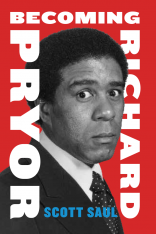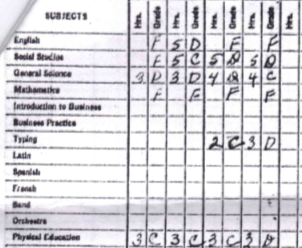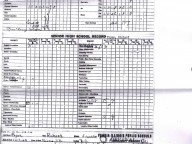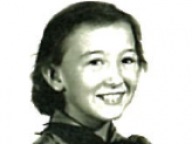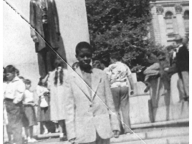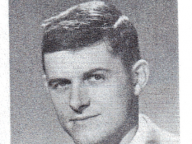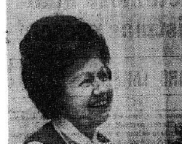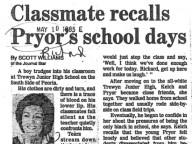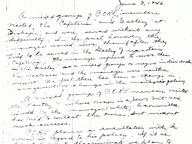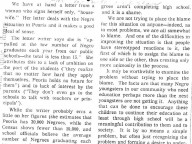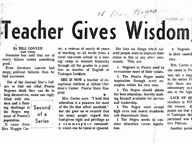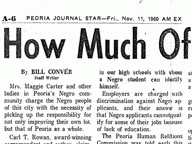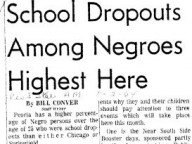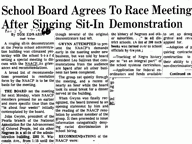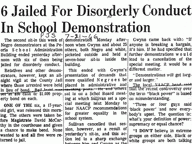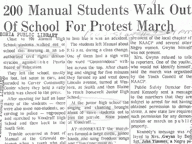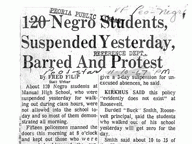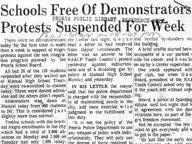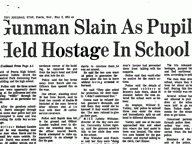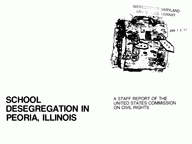Schooled
Richard Pryor’s years in school gave him an unconventional education. Though Richard never acquired the skills he was supposed to — reading remained a lifelong challenge for him — his trials at Peoria’s largely white schools shaped his comedy in far-reaching ways. It was at middle school that he first performed as a crossover comic for all-white audiences — an experience that left a complicated residue. It both seeded Richard’s larger ambitions and left him asking the perennial question: When white people laughed at his act, what was behind the laughter?
“Apparently Unstable Emotionally”
Richard had a difficult time reconciling his life with his family and his life at school. He floated through institutions where the realities of his home life in Peoria’s black underworld were unmentionable, and where the cartoon version of black life — promulgated through the minstrel show and its descendants in American popular culture — was close at hand. It was this gap between black reality and black stereotypes which Richard learned to exploit on his first comedic stages, and in front of the first audiences of his peers.
In 1945-1946, as his parents were divorcing, Richard began his elementary education at Irving School. He did not make the adjustment well. A string of “D”s and “F”s were taken as red flags; he was labeled as “apparently unstable emotionally” and, eventually, held back a year. From the start, he developed an identity as the class cut-up — the boy who would holler like Tarzan in the halls, or play basketball in the manner of his favorite member of the Harlem Globetrotters. It was his way of redirecting the unwanted attention he received as one of the only black kids in his class.
Glimmers of a Future Career
It was only when Richard transferred to Blaine Sumner in fifth grade that he managed to turn these antics into an act. There he struck a deal with his teacher, the perceptive Margaret Yingst: if he arrived at school on time, he would be permitted a ten-minute comedy routine in front of his class every Friday.
Soon he found himself performing before the larger audience of the entire school. At recess, he started delivering his comedy routines at the school gym’s entrance, supported by The Glow Girls, a four-girl singing group who served as his fellow headliners.
When Richard transferred to Trewyn Middle School, he continued to perform but now against a more hostile backdrop. There the same kids who delighted in his act also bullied him and called him a ‘nigger’ on the schoolyard — a recipe for confusion, ambivalence, and anger. Richard’s record of school attendance took a nosedive.
In ninth grade, Richard clashed with his science teacher Walter Fink, who was no “Mrs. Yingst.” A former military man, Fink was a straight arrow who saw Richard, in no uncertain terms, as a discipline problem. When a dispute between Richard and his teacher escalated into a physical altercation, Richard was tossed bodily from the classroom and expelled from Peoria Central High. He never returned. All told, he had attended seven different schools over his ten years of schooling.
Richard’s Schooling in Context
Richard’s struggles at school were not unique to him: in the 1940s and 1950s, black children in Peoria were much more likely to drop out of school than their white counterparts, or even than their black counterparts in Chicago. None of the black students who began at Central High with Richard in ninth grade graduated from there four years later: they left to join the workforce, or transferred to other schools, or, like Richard, were forced to leave.
At the same time, Richard was unusual in having attended some schools, like Blaine Sumner and Trewyn, that were among Peoria’s “whitest.” Given the city’s commitment to the idea of the neighborhood school and its patterns of housing segregation, its schools tended to be quite segregated: as late as 1966, twenty of the city’s 39 schools were more than 98% white; four were totally white.
Starting in the 1940s, black Peorians directed attention to discrimination in the schools. In 1946, activists aligned with the Congress of Racial Equality intervened in a high school’s production of a blackface minstrel show, and managed to eliminate all instances of blackface and references to “pickaninnies”.
When the Civil Rights movement hit Peoria with full force in the 1960s, education was a major battlefield. In 1966, Peoria’s school board met with the local N.A.A.C.P. chapter after a “singing sit-in” forced the city to consider a slate of recommendations for fairer educational practices. Eventually, such protests led to arrests and escalated into large-scale walkouts from Manual and Peoria High Schools — walkouts that resulted in mass suspensions. Peoria implemented a busing program, but black students continued to feel underserved by their school system.
Though solutions like busing failed to uproot discriminatory practices and disparities in education, education activists had fought against many of the same conditions Richard Pryor struggled to reshape in his stage act. Starting with his school performances, Pryor created a brand of comedy that was both a reflection of racial realities and a record of black resistance.
